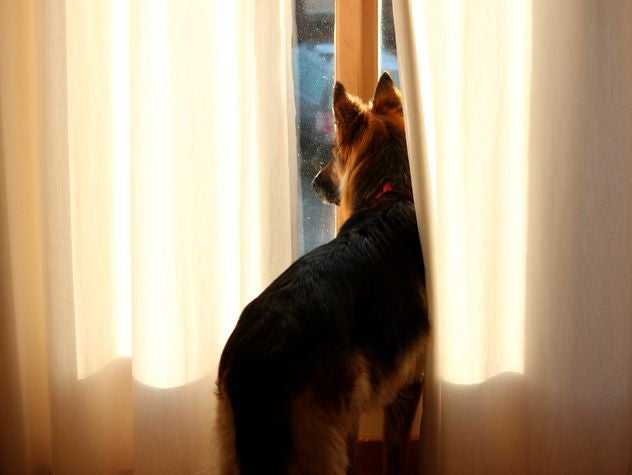Dog & Puppy Separation Anxiety Signs, Symptoms & Treatment

Dog separation anxiety is a troubling behavioral problem that can damage the bond between pet and pet owner, cause difficulties with neighbors and landlords, and place stress on both the dog and its owner.
In households with school-aged kids, summers are typically full of fun for everyone in the family – including the dog. But what happens when the kids head back to school in the late summer and the house is suddenly quiet and lonely?
With this sudden change in daily routine, your dog may experience depression or separation anxiety because of separation from the people they’re attached to.
Dealing with a dog with extreme separation anxiety may require seeking help from a veterinary behaviorist or a trainer with experience dealing with this disorder. In some cases, treating dog separation anxiety may require behavior modification drugs.
What Are the Signs of Dog Anxiety?
Dogs that suffer from separation anxiety may bark, whine, or howl when left alone. These dogs may become destructive — chewing on or digging at walls, doors, furniture, and other inanimate objects. They may urinate or defecate in the home. They also might go to extreme measures to escape, sometimes putting themselves at risk for injury.
Signs of separation anxiety in dogs typically affect those that are extremely attached to their owners. This may result in agitation from your dog in response to pre-departure cues from the owner. These cues may include things such as picking up car keys, putting on a coat, or handling a purse or briefcase. The dog also often will greet their owner in an exaggerated manner on return.
Dog Separation Anxiety Training: What Is the Best Way to Deal With It?
Confinement might be necessary to restrict the damage done by an anxious dog. However, confinement may not be well tolerated by many pets. If possible, the dog should be given the chance to get used to being confined. Placing treats and toys in the confinement area may be useful for acclimation. Introduction to the confinement area should be slow and gradual. A crate or carrier is acceptable, as are playpens or other devices that contain the dog.

Take your pooch for long morning walks to get them plenty of exercises and tire them out. Other options include placing the dog in daycare or having a family member or friend look after the pet while the owner is away.
When the dog does need to be left alone, owners should leave with as little drama as possible. Avoid long goodbyes. Provide the dog with a treat or toy as a distraction a few moments before leaving. Consider preparing Kongs stuffed with peanut butter or some other favorite treat. Working to get the treat out will provide your dog a distraction from their stress and hours of enjoyment and mental stimulation while you’re gone. When leaving, simply leave without any spoken goodbye or further interaction. On returning, the greeting should be kept low-key as well.
Owners should reward their dogs for calm, relaxed behavior. Encourage the dog to settle on a dog bed or blanket and provide a food treat or toy only when the dog is quiet. Anxious or exuberant behavior should not be rewarded when it occurs on an owner’s departure or return to the home. Spend quality time with your dog when you are at home; include them in family activities to assure them they are still an important part of the family.